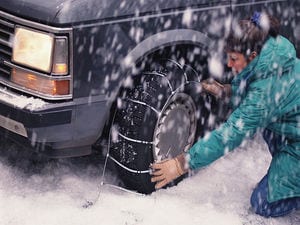
WEDNESDAY, Jan. 3, 2018 (HealthDay News) — Two-thirds of the United States is grappling with bitterly cold temperatures as an Arctic front slides across the country, so one emergency doctor offers practical advice for those caught in the frigid weather.
Dr. Robert Glatter, a physician from Lenox Hill Hospital in New York City, puts a premium on covering up and layering while “paying special attention to the head and scalp, as well as the nose, neck and ears.
“In the cold weather, it’s important to keep your head, face and nose covered, but most importantly dress in layers to prevent heat loss,” he recommended in a hospital news release.
Also, “it is advisable to wear sturdy insulated boots with thick wool socks which keep your feet and toes warm in the cold temperatures — especially while shoveling snow,” he added.
Shoveling in cold weather is itself an activity that can boost the risk for experiencing a heart attack, Glatter noted. The risk is particularly concerning among those already struggling with heart issues, including high blood pressure and diabetes.
To reduce such risk, he advised taking frequent breaks while at it, sticking to smaller shovel loads, and drinking lots of water to remain well-hydrated. Caffeine or alcohol can lead to dehydration and should be avoided, he said.
Another concern: falling, slipping and back injuries.
“People should wear sturdy, insulated boots and walk slowly, looking carefully at both feet and the pavement in front of them to avoid any potential patches of ice mixed in with the snow,” Glatter said.
Last but not least is the risk for developing hypothermia, a condition defined by dizziness, confusion and/or shivering that can strike following short exposure to frigid temperatures.
Hypothermia can happen after just 15 or 20 minutes spent outdoors in below-freezing temperatures, Glatter warned, with seniors and small children at particularly high risk.
But the solution, he suggested, is the common-sense use of sufficiently warm and dry clothing, layered to minimize exposure.
More information
There’s more on hypothermia at U.S. National Institutes of Health.
